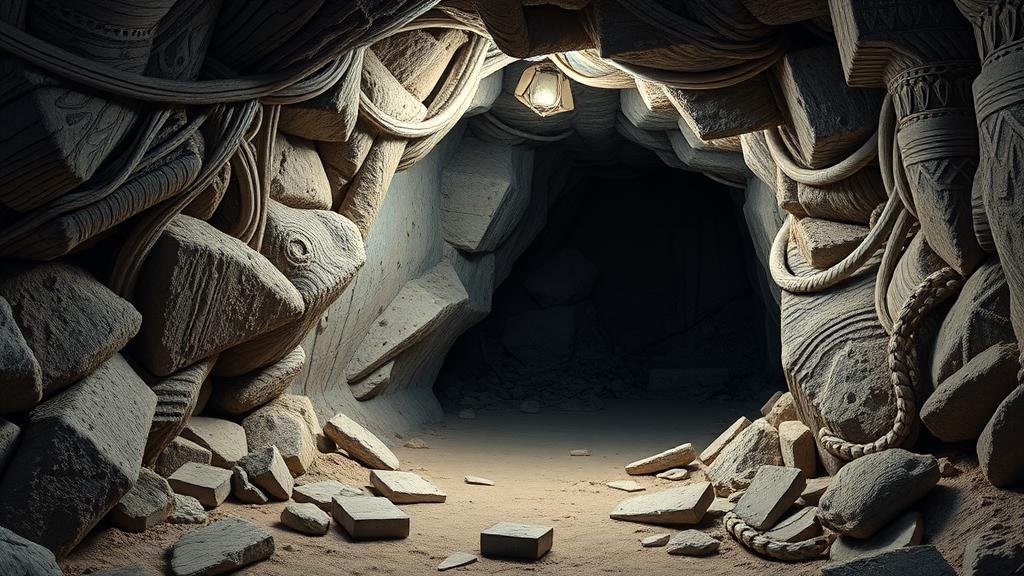Spotting Signs of Entrances Designed to Trigger Collapses or Traps
Understanding the Signs of Entrances Designed to Trigger Collapses or Traps
Entrances designed to trigger collapses or traps pose significant risks in various contexts, including architecture, wilderness survival, and even modern security setups. Recognizing the signs of such entrances can be crucial for both prevention and safety. This article delves into the intricate details of identifying potential traps, the psychology behind them, and real-world implications.
The Mechanics of Entrances Designed to Trigger Hazards
Entrances that are deliberately structured to cause harm rely on various mechanics, including structural weaknesses, deceptive appearances, and psychological manipulation. Understanding these mechanics requires knowledge of both physical properties and human behavior.
For example, a common element in such designs is the use of misleading structural elements, such as:
- False floors: These may appear sturdy but are constructed with weak materials, leading to sudden collapses.
- Hidden pits: Entrances covered by foliage or debris can conceal pitfalls that endanger unsuspecting individuals.
- Deceptive signs: An entrance might advertise safety or security yet actually serve as a trap designed to ensnare the unsuspecting.
Identifying Physical Signs of Hazardous Entrances
Spotting signs of potentially dangerous entrances starts with keen observation and awareness of surroundings. Specific characteristics can serve as indicators:
- Cracks and deterioration: Physical deterioration in walls or floors can indicate structural instability. For example, buildings that have sustained earthquakes often reveal stress fractures that could pose a risk of collapse.
- Unusual wear patterns: Anomalies such as excessive wear on one side of a doorway can suggest an entrance frequently used for negative purposes. Case studies from abandoned properties have illustrated how entrances may become worn due to repeated forced entry.
- Temperature changes: An unusual coldness or warmth near an entrance can indicate hidden voids or chambers that may be unsafe to enter.
Recognizing Psychological Triggers
Also to physical signs, many traps leverage psychological techniques to lure individuals. Understanding these triggers is vital for recognizing potential hazards:
- Appeal to curiosity: Entrances may be designed to pique interest without revealing underlying dangers. For example, a seemingly inviting cave may hide perilous stalactites that could cause injury.
- False security: Structures that appear fortified or maintained give a false sense of safety, leading individuals into traps. Historical examples exist in wartime scenarios where seemingly secure entrances were used as ambush points.
Real-World Applications and Case Studies
Several real-world case studies illustrate the dangers posed by entrances designed to trigger traps or collapses:
- The Eversource Energy Incident: In 2019, a utility worker fell through a false floor at an abandoned factory, leading to multiple injuries due to the concealed pit that was poorly marked.
- The Great Blizzard of 1888: Structures poorly designed for winter conditions led to numerous collapses and tragedies. In many cases, doors were constructed too heavily to withstand the pressure of snow, resulting in tragic accidents.
Conclusion and Takeaways
Spotting signs of entrances designed to trigger collapses or traps requires a multifaceted approach that examines both physical and psychological factors. Knowledge of the mechanics behind these designs enhances awareness and safety, enabling individuals to make informed decisions regarding access to potentially hazardous areas.
To wrap up, individuals should:
- Regularly assess their surroundings for physical signs of instability.
- Be cautious of psychological triggers that may entice them toward hazardous areas.
- Stay informed on case studies and real-world incidents that highlight the dangers associated with such entrances.
By adopting a vigilant mindset and fostering an understanding of potential hazards, individuals can better protect themselves from dangerous environments, enabling safer navigation through both structured and natural terrains.



